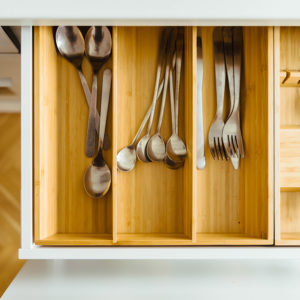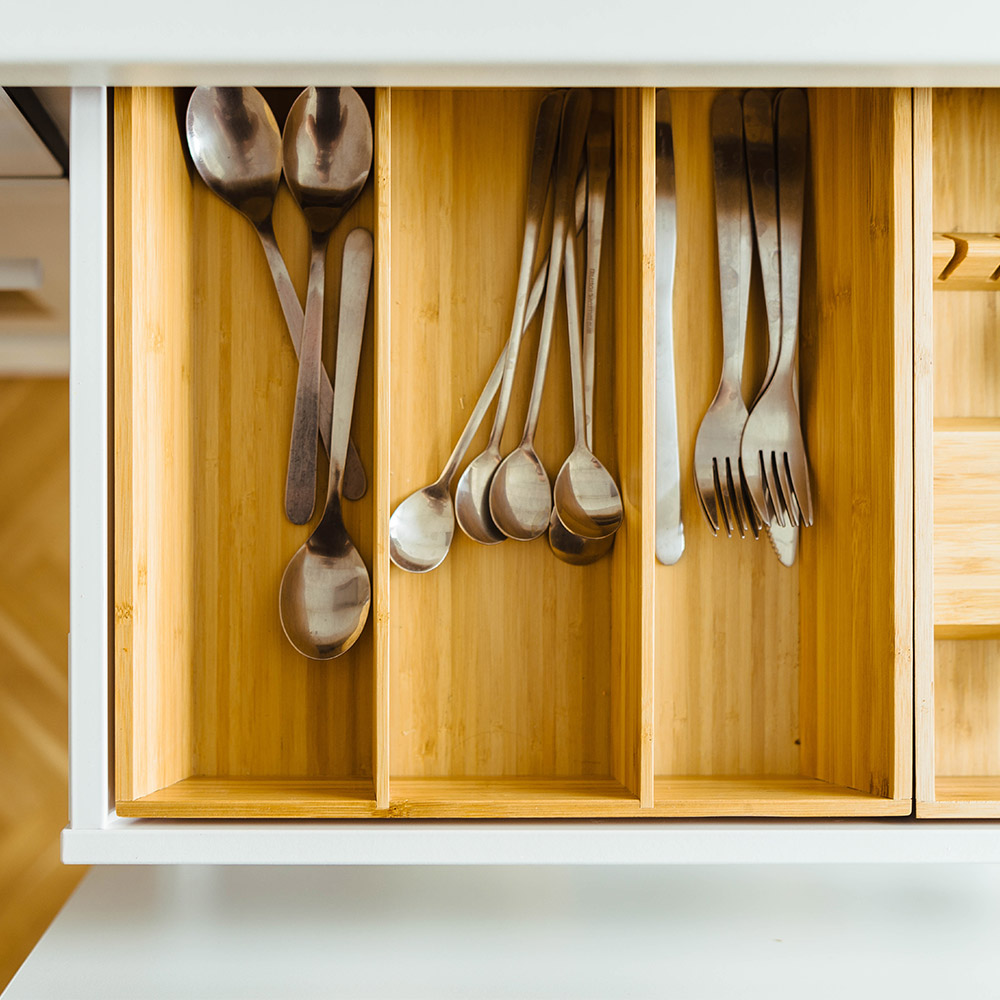Kitchen wares can be easily contaminated with dirty floodwater during a flooding incident. This is because, for the most part, they are stored in different places inside the kitchen, depending on how frequently it is used.
Once a flooding incident takes place, and kitchen items have been exposed to flood waters, it is important to know which kitchen items should be disposed and which ones can still be used following sanitizing and disinfection.
The SDSU Extension Cooperative Service came up with a one-page-flier on how to deal with flood exposed household materials. One of the highlights of their guidelines is hot to go about cleaning iron pans among other utensils.

“Kitchen items made of iron probably will be rusted. Remove rust by scouring with steel wool. After scouring and sanitizing iron items, season them before use to prevent food from sticking to them. Lightly coat the cooking surfaces with cooking oil and place them in an oven at 250 degrees Fahrenheit for two to three hours. The oil will seal the pores of the metal so food will not stick easily. If cupboards and food preparation surfaces were in contact with floodwater, clean and sanitize them before storing the clean dishes, pots and pans. Wash the surfaces with hot detergent solution. Then sanitize them using a solution of two tablespoons of liquid household bleach to a gallon of water”
The government of the State of Maine also came up with a simple, easy-to-follow guidelines on cleaning and washing salvageable kitchen items following a flooding incident.
“Discard Immediately: (a) Plastic utensils; (b) Wooden spoons; (c) Baby bottle nipples, and pacifiers. General Instructions: (1) Remove plastic and wooden handles from frying pans and saucepans. Clean parts separately. (2) Wash dishes, pots, pans and utensils in hot, sudsy water. (3) Rinse in clear water. (4) Place in wire basket or other container and dip in sanitizing solution. (5)Use a solution recommended by local health authorities or 1 1/2 tablespoons of chlorine bleach to a gallon of water.”
The rest can be found here.
Disinfecting pots and pans
The University of Florida for its part shared a comprehensive guide on sanitizing cookwares, depending on the material used for it. One of the materials that they featured is pewter.
“Wash thoroughly with hot sudsy water, rinse and dry. Use a soft toothbrush to get into crevices. Rub on silver polish (paste or liquid, not the dip type) with a soft cloth. Use a soft toothbrush to get into crevices. Rinse in hot soap suds and dry. Check for small holes, cracked joints and dents. If the pewter needs mending and is a prized piece, let a professional fix it. Small holes can be mended by cleaning the metal inside the pewter object with steel wool, then filling with pewter epoxy mender.”
Read the whole list for other materials here.
Knowing how to properly sanitize and disinfect utensils can help ensure that family members returning to their homes will not get sick due to use of contaminated kitchen wares.
San Diego Water Damage Restoration
If you recently experienced flood damage or water damage, the team at Mighty Dry is here to help. Contact us today to get started restoring your home or business.
Damage Restoration Services Nearby
San Diego Water Damage Restoration
Water Damage Restoration Aliso Viejo
Water Damage Restoration Anaheim
Water Damage Restoration Bonsall
Water Damage Restoration Buena Park
Water Damage Restoration Carlsbad CA
Water Damage Restoration Chula Vista CA
Water Damage Restoration Corona
Water Damage Restoration Del Mar
Water Damage Restoration Escondido
Water Damage Restoration Fallbrook
Water Damage Restoration Fontana
Water Damage Restoration Hemet CA
Water Damage Restoration Highland
Inland Empire Water Damage Restoration
Water Damage Restoration Kearny Mesa
Water Damage Restoration Laguna Beach
Water Damage Restoration La Jolla
Water Damage Restoration Menifee
Water Damage Restoration Mira Mesa
Water Damage Restoration Mission Valley
Water Damage Restoration Moreno Valley CA
Water Damage Restoration Murrieta
Water Damage Restoration Oceanside
Orange County Water Damage Restoration
Water Damage Restoration Pacific Beach
Water Damage Restoration Perris CA
Water Damage Restoration Poway
Water Damage Restoration Rancho Cucamonga CA
Water Damage Restoration Rancho Santa Fe
Water Damage Restoration Redondo Beach CA
Water Damage Restoration Rialto
Water Damage Restoration Riverside CA
Water Damage Restoration San Bernardino
Water Damage Restoration San Marcos
Water Damage Restoration Santee






